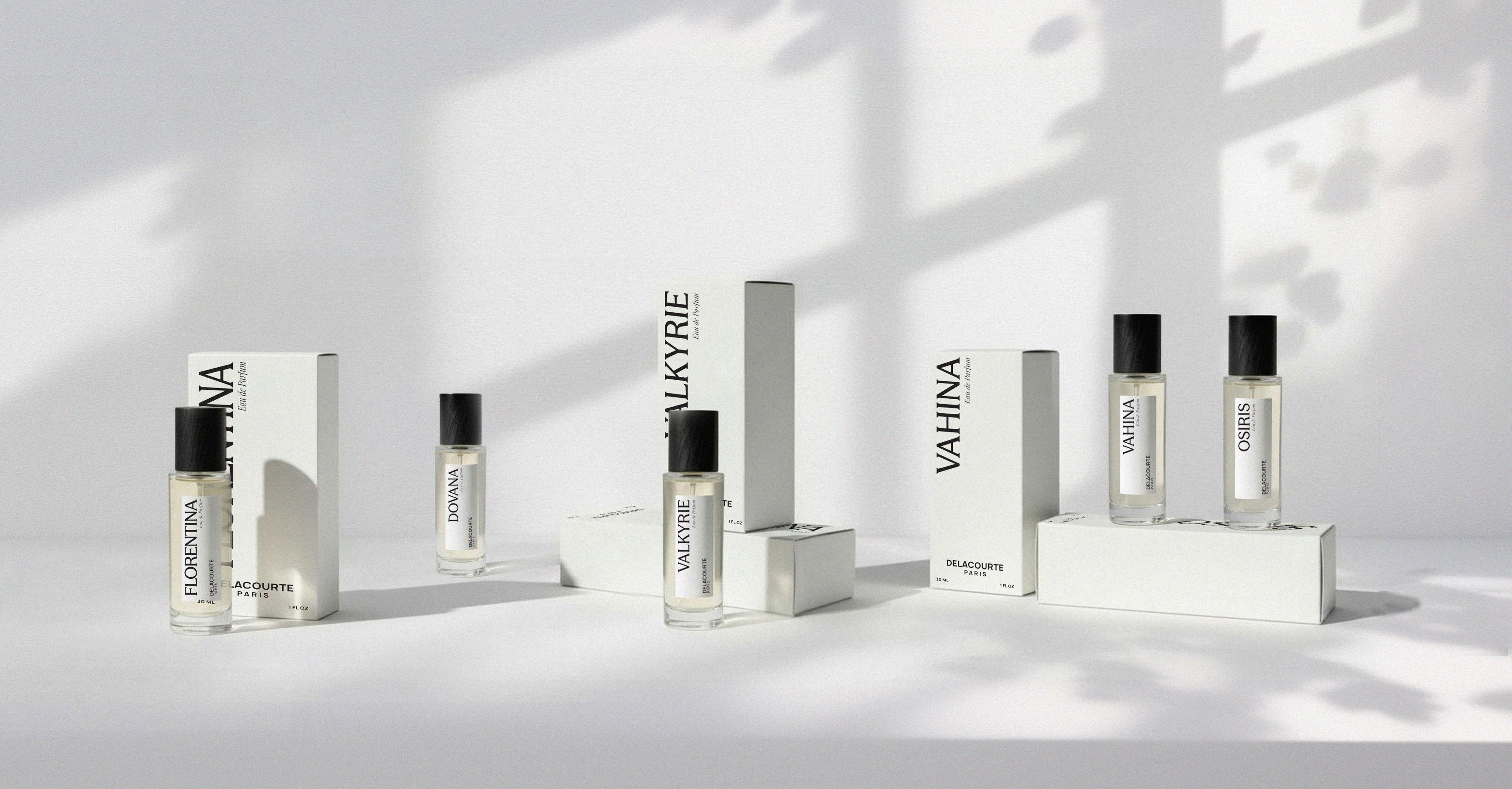Osmanthus is a rare and still little-known raw material in perfumery. Yet it is increasingly present in fragrance compositions, especially in niche perfumery. Let’s uncover the secrets of this exotic flower, a symbol of wisdom and perpetual renewal.

Origin of Osmanthus
Osmanthus mainly blooms in southern China, between Guilin and Yangzhou. In fact, Guilin means “forest of osmanthus” in Chinese.
Its tiny flowers — less than a centimeter, usually white (sometimes golden orange or red) — emit a surprisingly powerful and long-lasting fragrance. In Greek, osmanthus means “fragrant flower”.
The genus Osmanthus includes around fifteen species. The one used in perfumery is Osmanthus fragrans. Others are more commonly planted as hedges. This tree, a cousin of the laurel and part of the Oleaceae family, can grow up to 20 meters high. It grows in China, Japan, and Malaysia, but only China produces osmanthus concrete.
Its blooming season is brief (10 days), starting in June and sometimes repeating until October. Harvesting occurs between September and October. Osmanthus is also known as “Fragrant Olive”, “Chinese Olive”, or “Tea Olive”.
The Fragrance of Osmanthus
Its floral, sensual, and slightly animal scent is reminiscent of jasmine. Highly fruity, it evokes dried apricot, with leathery and hay-like nuances enhanced by brining.
This rare flower offers one of the only natural fruity notes in perfumery, alongside ingredients like davana or blackcurrant, which feature green and tangy facets.
Most fruity notes are synthetically produced or created through accords (e.g., cherry via frambinone). Some are enriched with almond notes, either natural (from apricot kernels) or synthetic (benzaldehyde, benzoic aldehyde).
More natural fruity notes are now being explored by perfumers through esters or isolates: pear, apple, peach, passion fruit, and more.
How Osmanthus Concrete Is Made
The flowers are harvested using long poles and collected on white cloths. Delicate and short-lived, they fade quickly. Unique feature: they are immersed in a brine (saltwater solution) to preserve them and allow production over a six-month period.
After 3 to 4 months in brine, the flowers are washed and extracted. Clarification and filtration follow to yield the concrete. The concrete is often transported in traditional Chinese porcelain jars.
It takes 720 kg of flowers to produce 750 g of absolute. Yield depends on the variety. The best-performing is Osmanthus fragrans var. thunbergii. The absolute is obtained via ethanol extraction of the concrete.
Key molecules: undecalactone, cis-jasmone, ionones (e.g., dihydro-β-ionone).
Other Uses of Osmanthus
Beyond perfumery, osmanthus is used to flavor tea, wine, cakes, and honey. It also acts as a natural antioxidant.
Perfumes Featuring Osmanthus
- Eau de Dolce Vita, Christian Dior
- 1000, Jean Patou
- Osmanthe Yunnan, Hermès
- Bamboo and Osmanthus Flower, Roger&Gallet
- Osmanthus, Acqua di Parma
- Osmanthus Interdite, Parfum d’Empire
- Thé pour un Été, L’Artisan Parfumeur
- Mont de Narcisse, L’Artisan Parfumeur
- Osmanthus, The Different Company
- Flora by Gucci, Gucci
- Good Girl Gone Bad, By Kilian
- L’Île au Thé, Annick Goutal
- Galop, Hermès
- Mille Feux, Louis Vuitton
- Noël au Balcon, État Libre d’Orange
- Jeux de Peau, Serge Lutens
- Love Osmanthus, Atelier Cologne
